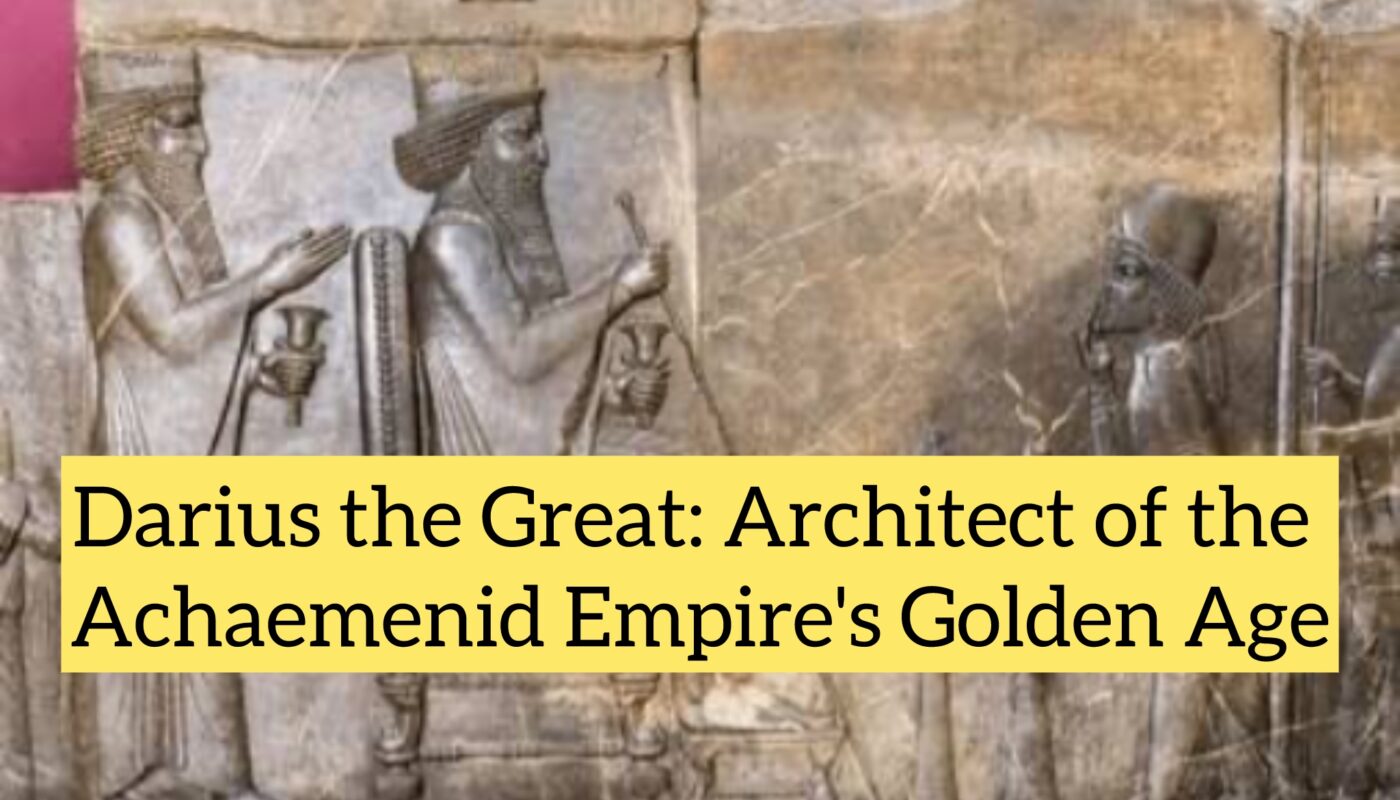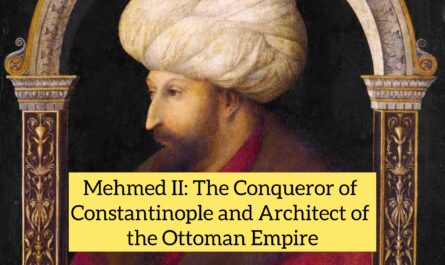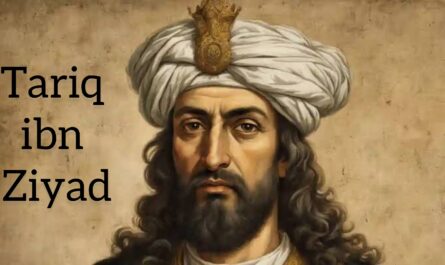Introduction
Darius I, known as Darius the Great (reigned 522–486 BCE), was the third king of the Achaemenid Empire and one of its most effective rulers. Under his leadership, the empire reached its greatest territorial extent and achieved a high level of administrative and cultural sophistication. Darius was not only a conqueror but also a reformer, known for developing an efficient system of governance, promoting economic stability, and undertaking grand construction projects like Persepolis.
From Persia to India and Egypt to Thrace, Darius’s legacy remains a cornerstone of ancient imperial administration and cultural integration.
Early Life and Rise to Power
Background
Darius was born around 550 BCE into the Achaemenid dynasty. He was the son of Hystaspes, a nobleman and provincial governor under Cyrus the Great. Darius was not directly in line for the throne, but his military and administrative experience made him a valuable figure in the empire.
The Usurpation and the “False Smerdis”
After Cambyses II (son of Cyrus) died in 522 BCE, a man claiming to be Smerdis, Cambyses’ brother, seized the throne. Darius, with the support of six noble families, overthrew this impostor—who was actually Gaumata, a Magian priest—and declared himself king.
To legitimize his rule, Darius emphasized his royal lineage and divine favor, especially in the Behistun Inscription, a monumental trilingual relief carved into a cliff in western Iran.
Administrative Reforms and Governance
The Satrapy System
Darius restructured the empire into 20 provinces, known as satrapies, each governed by a satrap (governor). This system:
-
Allowed local autonomy while maintaining central control
-
Standardized tribute payments
-
Appointed inspectors, known as the “King’s Eyes and Ears,” to monitor satraps
Legal and Economic Innovations
-
Introduced a unified legal code across the empire
-
Standardized weights and measures
-
Issued the Daric, a high-purity gold coin that became widely accepted in international trade
-
Established taxation based on resources and productivity, improving state revenue
Major Construction Projects
Darius the Great is known for his ambitious architectural endeavors:
1. Persepolis
-
Began construction of Persepolis, a ceremonial capital adorned with columned halls, detailed bas-reliefs, and massive staircases
-
Symbolized the empire’s diversity and grandeur
2. Royal Road
-
Built the Royal Road, a 2,500-km (1,550-mile) highway from Sardis (in modern Turkey) to Susa (in Iran)
-
Allowed rapid communication, military mobilization, and trade
3. Canal of the Pharaohs
-
Ordered the construction of a canal linking the Nile River to the Red Sea
-
Facilitated trade between Egypt, Arabia, and India
Military Campaigns and Expansion
Under Darius’s rule, the Achaemenid Empire reached its zenith:
Conquests
-
Expanded eastward into the Indus Valley
-
Subjugated Thrace and parts of Macedonia
-
Reasserted control over rebellious regions in Babylon, Media, and Elam
The Invasion of Greece
-
In 490 BCE, Darius attempted to subdue the Greek city-states, especially Athens and Eretria, for their support of the Ionian Revolt
-
His forces were defeated at the Battle of Marathon, a pivotal moment in Greco-Persian relations
Though the invasion failed, Darius’s campaign laid the groundwork for later attempts by his son, Xerxes I.
Religion and Culture
Zoroastrian Influence
Darius promoted Zoroastrianism, the ancient Iranian religion centered around the worship of Ahura Mazda:
-
Declared Ahura Mazda as the supreme deity in inscriptions
-
Promoted truth, order (asha), and justice
-
Rejected falsehood and rebellion as evils
Cultural Tolerance
Darius allowed a high degree of religious and cultural freedom:
-
Supported temple restoration in Egypt and Babylonia
-
Respected local customs and traditions
-
Incorporated diverse ethnic groups into the imperial bureaucracy and army
The Behistun Inscription
One of Darius’s most famous legacies is the Behistun Inscription, often compared to the Rosetta Stone:
-
Carved on a limestone cliff near the city of Kermanshah
-
Written in Old Persian, Elamite, and Babylonian cuneiform
-
Describes how Darius came to power and lists his conquests
-
Crucial for modern scholars in deciphering ancient cuneiform scripts
Death and Succession
Darius the Great died in 486 BCE and was buried in a rock-cut tomb at Naqsh-e Rostam, near Persepolis. His son, Xerxes I, succeeded him and continued his campaigns, most notably the invasion of Greece in 480 BCE.
Legacy of Darius the Great
Political and Administrative
-
Created one of the first multi-ethnic empires governed with a coherent structure
-
His model of governance influenced later empires, including the Romans, Byzantines, and Islamic Caliphates
Economic
-
Developed a stable monetary system and trade routes
-
Encouraged agricultural development and infrastructure building
Cultural and Historical
-
His reign is considered the Golden Age of the Achaemenid Empire
-
Left a legacy of monumental architecture, inscriptions, and innovations that continue to influence modern Iran and historical scholarship
Key Facts About Darius the Great
| Aspect | Details |
|---|---|
| Full Name | Darius I Hystaspes |
| Reign | 522–486 BCE |
| Predecessor | Gaumata (False Smerdis) |
| Successor | Xerxes I |
| Religion | Zoroastrianism |
| Notable Constructions | Persepolis, Royal Road, Behistun Inscription |
| Famous Battle | Battle of Marathon (490 BCE) |
| Empire’s Extent | From Libya and the Aegean Sea to the Indus Valley |
Conclusion
Darius the Great was more than a conqueror; he was a visionary who established systems of governance, law, and infrastructure that allowed the Achaemenid Empire to thrive for centuries. His reign laid the foundation for Persian imperial identity, administration, and cultural sophistication. Despite military setbacks like Marathon, his ability to manage a vast and diverse empire marks him as one of antiquity’s greatest rulers.
Frequently Asked Questions (FAQs)
What was Darius the Great known for?
He is known for expanding the Achaemenid Empire, creating the satrapy system, building the Royal Road, and initiating grand construction projects like Persepolis.
Was Darius a Zoroastrian?
Yes, Darius promoted Zoroastrianism and referred to Ahura Mazda in his royal inscriptions.
What is the significance of the Behistun Inscription?
It is a crucial trilingual artifact that helped scholars decipher cuneiform writing and provides valuable historical insight into Darius’s reign.
Did Darius ever conquer Greece?
He launched a campaign against Greece but was defeated at the Battle of Marathon in 490 BCE.
Where is Darius buried?
He is buried at Naqsh-e Rostam, in a rock-cut tomb beside other Achaemenid kings.



